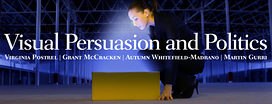In her reply to Virginia Postrel, Autumn Whitefield-Madrano writes, “We want the work that goes into personal attractiveness to be invisible; we want it to be something that just happens instead of something that’s sought. It’s equivalent to inconspicuous consumption. Look good, but don’t let on what it cost you.”
This is what we want, and that’s why Baldassare Castiglione created the idea of sprezzatura. Narrowly, this is the art of concealing art with art. More broadly, it’s the notion that the self and the surfaces presented for public scrutiny should look effortless and unstudied.
Sprezzatura is behind the code of old money on both sides of the Atlantic. And of course, it rather spoils the fun. I mean, you work really hard, and you rise in the world, and the person who greets you at the gate called “real wealth and standing” is a shabby-looking man who asks you to take off the bling and to turn all other status messages down to “3” and possibly “2.” I mean, what was the point of making a bucketload of money if not to bask in everyone’s admiration, and how is that going to happen if we are obliged to forgo making a spectacle of ourselves? Huh? And just what’s wrong with “11,” anyway?
But there it is. It turns out luxury is not allowed to be fully luxurious, and that’s where glamour comes in. Cause, honey, glamour lets it rip. Glamour demands a certain control and discipline in the making, but finally what it’s after in the observer is shock and awe. Glamour wants us to surrender our faculties and blink with astonishment.
Glamour means to commandeer our attention. Once while walking with Steve and Virginia Postrel in public somewhere in Dallas or LA, I remember people stopping simply to stare at Virginia’s clothing. I think especially it was her skirt. It was that glamorous. They were in fact being a little rude, but witlessly so, because their attention was coerced. Better, this was involuntary admiration. So the accusation of rudeness was softened.
Glamor has a way of forcing a violation of the rules of everyday life. Normally we don’t stare. But glamour when it summons its most terrible powers makes us stare.
At the limit, glamour confronts us with the sublime. As Kant described,
…the high waterfall of some night river, and the like, [noting these] make our power of resistance of trifling moment in comparison with their might. But, provided our own position is secure, their aspect is all the more attractive for its fearfulness; and we readily call these objects sublime, because they raise the forces of the soul above the height of vulgar commonplace, and discover within us a power of resistance of quite another kind, which gives us courage to be able to measure ourselves against the seeming omnipotence of nature.
The sublime can explode our categories of perception, overwhelm our sense of scale, test our powers of comprehension. Glamour goes all the way to 11.
References
Aldrich, Jr. Nelson W. 1988. Old Money: The Mythology of America’s Upper Class. New York: Vintage.
Castiglione, Baldassarre. 1967. The Book of the Courtier from the Italian, Done into English by Sir Thomas Hoby, Anno 1561, with an Introd. by Walter Raleigh. New York: AMS Press.
Kant, Immanuel. 1952. The Critique of Judgement. translator James Creed Meredith. Oxford: Clarendon Press, pp. 110-111.

